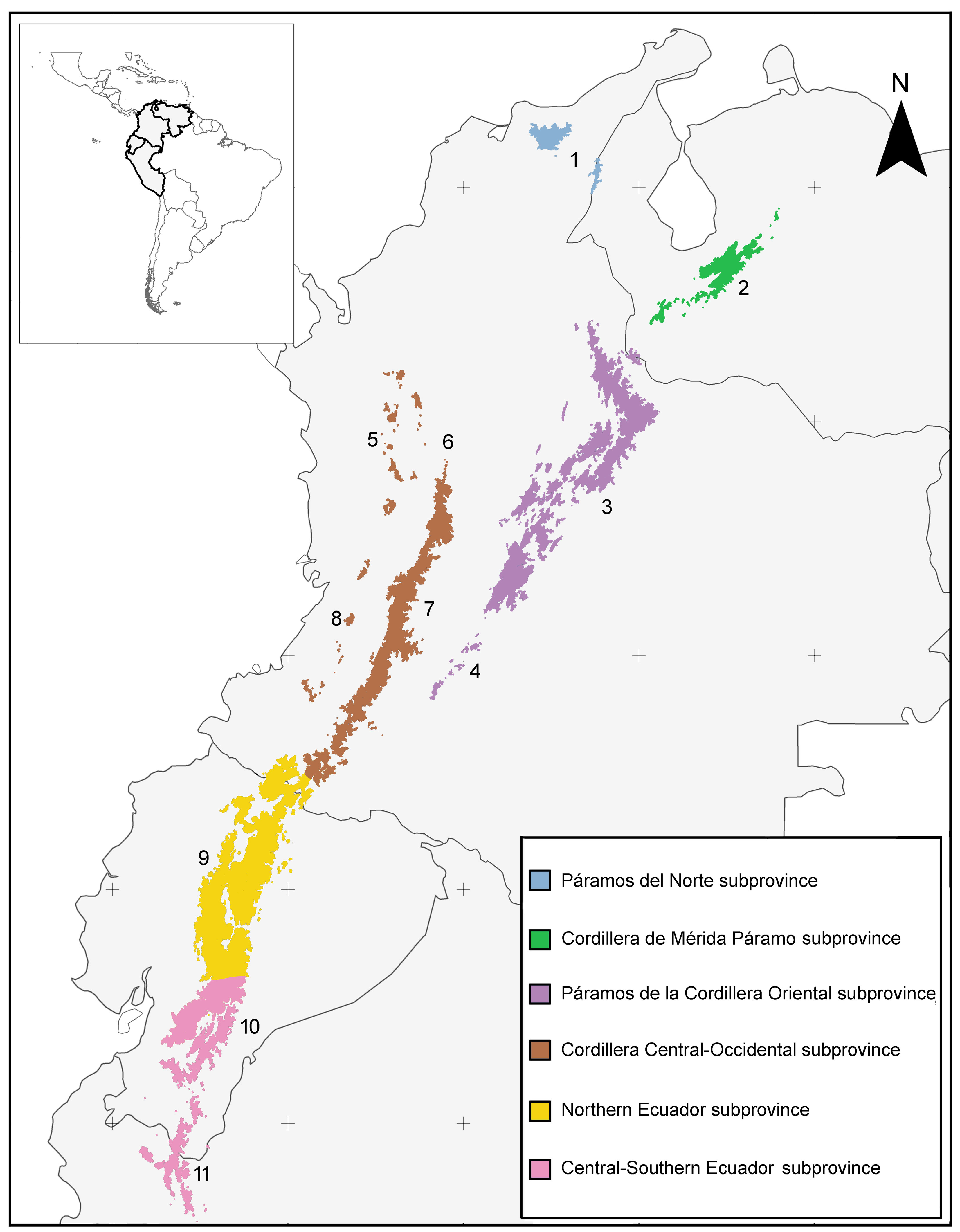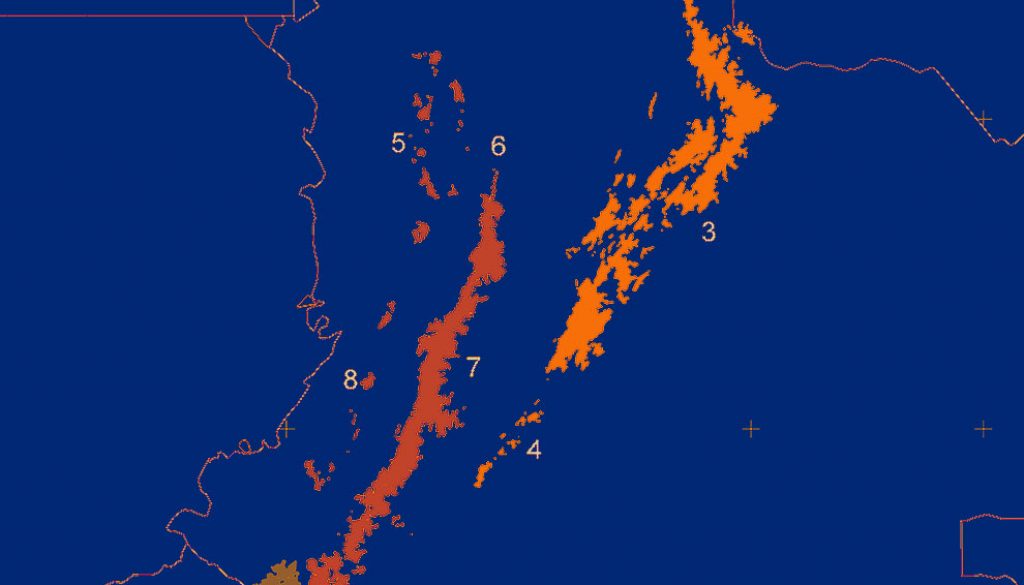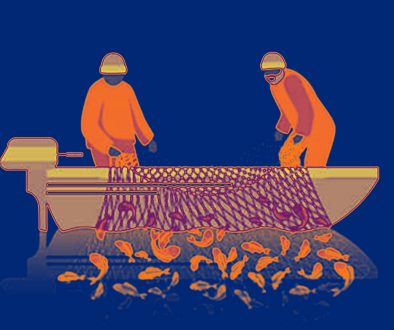Juan J. Morrone *
Universidad Nacional Autónoma de México, Facultad de Ciencias, Departamento de Biología Evolutiva, Museo de Zoología “Alfonso L. Herrera”, Circuito Exterior s/n, Ciudad Universitaria, Coyoacán, 04510 Ciudad de México, Mexico
*Corresponding author: morrone@ciencias.unam.mx (J.J. Morrone)
Received: 10 June 2020; accepted: 7 September 2020
Abstract
Some recent contributions to the biogeographic regionalization of the Páramo province are reviewed and compared. As a result, a consensus regionalization is proposed, recognizing 6 subprovinces and 11 districts: Páramos del Norte subprovince (Sierra Nevada district), Cordillera de Mérida Páramo subprovince (Venezuelan Páramo district), Páramos de la Cordillera Oriental subprovince (Páramos de Boyacá and Los Picachos districts), Cordillera Central-Occidental subprovince (Paramillo del Sinú, Santa Inés-Sonsón, Main Central Cordillera and Páramo de los Farallones de Cali districts), Northern Ecuador subprovince (Northern Ecuadorian Páramo district), and Central-Southern Ecuador subprovince (Central Ecuadorian Páramo and Southern Ecuadorian Páramo districts).
Keywords: Andean region; Neotropical region; South American Transition Zone; Biogeographic regionalization
© 2021 Universidad Nacional Autónoma de México, Instituto de Biología. This is an open access article under the CC BY-NC-ND license
Revisión de las subprovincias y distritos de la provincia biogeográfica del Páramo, norte de América del Sur
Resumen
Se revisan y comparan algunas contribuciones recientes relacionadas con la regionalización biogeográfica de la provincia del Páramo. Como resultado, se propone una regionalización de consenso, reconociéndose 6 subprovincias y 11 distritos: subprovincia Páramos del Norte (distrito de la Sierra Nevada), subprovincia del Páramo de la Cordillera de Mérida (distrito del Páramo Venezolano), subprovincia Páramos de la Cordillera Oriental (distritos Páramos de Boyacá y Los Picachos), subprovincia de la Cordillera Central-Occidental (distritos Paramillo del Sinú, Santa Inés-Sonsón, Cordillera Central Principal y Páramo de los Farallones de Cali), subprovincia del Norte del Ecuador (distrito del Páramo del Norte del Ecuador) y subprovincia del Centro-Sur del Ecuador (distritos del Páramo Ecuatoriano Central y Páramo Ecuatoriano Sur).
Palabras clave: Región Andina; Región Neotropical; Zona de Transición Sudamericana; Regionalización biogeográfica
© 2021 Universidad Nacional Autónoma de México, Instituto de Biología. Este es un artículo Open Access bajo la licencia CC BY-NC-ND
Introduction
The Páramo biogeographic province comprises the high mountain peaks of the Andean cordillera of western Venezuela, Colombia, Ecuador, and northern Peru, from the upper forest line at 3,000-3,500 m upwards and below the permanent snowline at ca. 5,000 m (Morrone, 2018a). The biotic assembly of the Páramo biogeographic province occurred mostly during the Neogene uplift of the northern Andes (van der Hammen & Cleef, 1986). The higher elevations allowed the development of a particular biota combining Neotropical elements previously distributed in the area together with Subantarctic elements that dispersed from the south and Nearctic elements that crossed the Panama Isthmus since 3 mya (Morrone, 2018a). Based on these mixed affinities this province has been assigned to the South American Transition Zone (Morrone, 2014, 2015).
Most of the biogeographic studies dealing with the Páramo province have been largely qualitative (e.g., Balslev & Luteyn, 1992; Cleef, 1978, 1981; Cuatrecasas, 1986; Hernández et al., 1992; Madriñán et al., 2013; Monasterio, 1986; Morales et al., 2007; Rangel, 2000; Sklenár et al., 2011; van der Hammen & Cleef, 1986; Vuilleumier & Monasterio, 1986). In the last years, some authors have analyzed quantitatively this province and produced biogeographic regionalizations (Díaz-Acevedo et al., 2020; Jiménez-Rivillas et al., 2018; Londoño et al., 2014; Miranda-Esquivel et al., 2004). Although differing in some respects, these contributions agree basically in some of the units recognized within the Páramo province.
The objective was to review these regionalizations and to propose a consensus scheme, based on the similarities of the biogeographic units recognized by the different authors.
Material and methods
Published biogeographic regionalizations were compared, especially considering those of Jiménez-Rivillas et al. (2018) and Díaz-Acevedo et al. (2020). A comparison of the units recognized showed a substantial agreement, where the smaller units of Jiménez-Rivillas et al. (2018) are nested within the larger units recognized by Díaz-Acevedo et al. (2020). After recognizing the former as districts and the latter as subprovinces, their valid names were assigned to them following the International Code of Area Nomenclature (Ebach et al., 2008).
Results
Miranda-Esquivel et al. (2004) analyzed the Colombian páramos, undertaking a parsimony analysis of endemicity (PAE) based on plant distributions. They found some groups of páramos but did not attempt a formal biogeographic regionalization.
Londoño et al. (2014) also analyzed the Colombian portion of the province, undertaking a parsimony analysis of endemicity (PAE) of plant distributions. They found 5 main clades, which they treated as subprovinces: Páramo de la Cordillera Oriental, Páramos del Macizo and Cordillera Central, Páramos de Antioquia, Páramos del Norte, and Páramos de la Cordillera Occidental.
Jiménez-Rivillas et al. (2018) undertook a parsimony analysis of endemicity based on plant and animal endemic species to the Páramo province. They found 11 main clades, which they considered to represent the following districts: Venezuelan Páramo, Southern Ecuadorian Páramo, Central Ecuadorian Páramo, Northern Ecuadorian Páramo, Los Picachos, Sierra Nevada, Santa Inés-Sonsón, Paramillo del Sinú, Páramo de los Farallones de Cali, Páramos de la Cordillera Oriental, and Páramos Quindío.
Díaz-Acevedo et al. (2020) undertook an endemicity analysis of plant and animal species. They identified 8 areas of endemism, which they treated as subprovinces: Santa Marta-Perijá, Mérida, Santanderes-Boyacá, Cundinamarca, Cordillera Central-Occidental, Northern Ecuador, Central-Southern Ecuador, and Talamanca.
A comparison of the different schemes shows that 6 larger units can be considered as subprovinces and 11 units nested within them can be considered districts (Fig. 1). The subprovinces correspond mostly to Díaz-Acevedo et al. (2020) and the districts to Jiménez-Rivillas et al. (2018). The valid names of the province are provided herein, subprovinces and districts (following the International Code of Area Nomenclature; Ebach et al., 2008) and their synonyms are listed.
Páramo province
Incasic province (in part) Mello-Leitão, 1943: 130.
Páramo province Cabrera, 1957: 335.
Northern Andes area (in part) Sick, 1969: 461.
Bogotá subcenter Müller, 1973: 46.
Colombian Montane province Udvardy, 1975: 42.
Páramo region Rivas-Martínez & Tovar, 1983: 516.
North Andean area Coscarón & Coscarón-Arias,
1995: 726.
Northern Andean Páramo ecoregion Dinerstein et al., 1995: 102.
Páramo ecoregion Huber & Riina, 1997: 154.
North Andean Páramo province Morrone, 2001: 107.
Norandean Páramo province Quijano-Abril et al., 2006: 1270.
Northern Andean area Apodaca et al., 2015: 5.
From an evolutionary or historical perspective, biogeographic units should correspond to natural areas, based on the cooccurrence of endemic taxa (Morrone, 2018b). Under this criterion, the Páramo province is restricted to Colombia, western Venezuela, Ecuador, and northern Peru (Morrone, 2014, 2015, 2018a; Jiménez-Rivillas et al., 2018). Some authors (e.g., Díaz-Acevedo et al., 2020; Londoño et al., 2014; Sklenár et al., 2011) consider the Páramo biome, which encompasses other physonomically similar areas from Costa Rica, Panama, and Peru. These areas, although vegetationally similar, harbor different endemic taxa.
Páramos del Norte subprovince, stat. nov.
Páramos del Norte province Londoño et al., 2014: 84.
Santa Marta-Perijá subprovince Díaz-Acevedo et al., 2020: 507, syn. nov.

This subprovince has been recognized by Londoño et al. (2014) and Díaz-Acevedo et al. (2020). It includes a single district, characterized by Jiménez-Rivillas et al. (2018).
Sierra Nevada district
Sierra Nevada center Müller, 1973: 31.
Sierra Nevada de Santa Marta massif Cuatrecasas, 1986: 279.
Sierra de Perijá-Valledupar block Cuatrecasas, 1986: 291.
Perijá district Hernández et al., 1992: 139.
Sierra Nevada de Santa Marta district Hernández et al., 1992: 109.
Southern Perijá district Hernández et al., 1992: 110.
Páramos de Santa Marta district van der Hammen, 1997: 20.
Sierra Nevada district Morrone, 2014: 58; Jiménez-Rivillas et al., 2018: 303.
Cordillera de Mérida Páramo subprovince
Cordillera de Mérida Páramo ecoregion Dinerstein et al., 1995: 102.
Mérida subprovince Londoño et al., 2014: 85; Díaz-Acevedo et al., 2020: 507, syn. nov.
This subprovince has been recognized by Díaz-Acevedo et al. (2020) and includes a single district, characterized by Jiménez-Rivillas et al. (2018). Its vegetation has been analyzed by Ricardi et al. (1997).
Venezuelan Páramo district
Venezuelan Páramo district Jiménez-Rivillas et al., 2018: 300.
Páramos de la Cordillera Oriental subprovince, stat. nov.
Páramos de la Cordillera Oriental district Hernández et al., 1992: 110; Jiménez-Rivillas et al., 2018: 304.
Páramos de la Cordillera Oriental sector van der Hammen, 1997: 20.
Páramos de la Cordillera Oriental province Londoño et al., 2014: 83.
Cundinamarca subprovince Díaz Acevedo et al., 2020: 507, syn. nov.
Santanderes-Boyacá subprovince Díaz Acevedo et al., 2020: 507, syn. nov.
To recognize a single subprovince is more appropriate, following Londoño et al. (2014). It includes 2 districts, characterized by Jiménez-Rivillas et al. (2018).
Páramos de Boyacá district
Páramos de Boyacá block Cuatrecasas, 1986: 291.
Páramos de Cundinamarca block Cuatrecasas, 1986: 291.
Páramos of Tamá-Santander-Norte de Santander block Cuatrecasas, 1986: 291.
Tachira district Hernández et al., 1992: 142.
Páramos de Los Santanderes district van der Hammen, 1997: 20.
Cordillera los Cobardes district van der Hammen, 1997: 20.
Páramos de Boyacá district van der Hammen, 1997: 20.
Páramos de Cundinamarca district van der Hammen, 1997: 20.
Los Picachos district
Los Picachos district van der Hammen, 1997: 20; Jiménez-Rivillas et al., 2018: 303.
La Fragua-Cerro Punta district van der Hammen, 1997: 20.
Páramos de Los Picachos district Morales et al., 2007: 35.
Páramos de Miraflores district Morales et al., 2007: 35.
Cordillera Central-Occidental subprovince
Cordillera Central-Occidental subprovince Díaz-Acevedo et al., 2020: 507.
This subprovince has been recognized by Díaz-Acevedo et al. (2020) and includes 4 districts, characterized by Jiménez-Rivillas et al. (2018).
Paramillo del Sinú district
Paramillo del Sinú district Hernández et al., 1992: 149; Jiménez-Rivillas et al., 2018: 304.
Dabeiba district Hernández et al., 1992: 110.
Páramos Paramillo-Frontino district van der Hammen, 1997: 20
Páramo de Paramillo district Morales et al., 2007: 155.
Páramos de Antioquia province Londoño et al., 2014: 84.
Santa Inés-Sonsón district
Páramos de Chaquiro-Frontino Cuatrecasas, 1986: 291.
Frontino district Hernández et al., 1992: 111.
Citará district Hernández et al., 1992: 110.
Páramos Citará-Tatamá district van der Hammen, 1997: 20.
Páramos Paramillo-Frontino district van der Hammen, 1997: 20.
Santa Inés-Alto Hierbal district van der Hammen, 1997: 20; Jiménez-Rivillas et al., 2018: 303.
Páramos de Belmira district Morales et al., 2007: 109.
Páramos de Frontino-Tatamá district Morales et al., 2007: 155.
Páramos de Sonsón complex Alzate et al., 2016: 21.
Páramos del Valle de Aburrá y Sonsón complex Alzate et al., 2016: 19
Main Central Cordillera district, stat. nov.
Macizo Colombiano nucleus Cuatrecasas, 1986: 291.
Main Central Cordillera area Cuatrecasas, 1986: 291.
Troncal Sur of the Central Cordillera sector Cuatrecasas, 1986: 291.
Páramos Quindío district Hernández et al., 1992: 110; Jiménez-Rivillas et al., 2018: 305, syn. nov.
Alto Cauca Highland district Hernández et al., 1992: 111.
Alto Patía district Hernández et al., 1992: 147.
Alto Patía Subandean district Hernández et al., 1992: 110.
Cauca-Huila-Valle-Tolima Andean Forests district Hernández et al., 1992: 110.
Cauca-Huila-Valle-Tolima Páramos district Hernández et al., 1992: 110.
Central Cordillera Southeastern Subandean district Hernández et al., 1992: 110.
Nariño-Putumayo Páramos district Hernández et al., 1992: 109.
Western Nariño Andean Forests district Hernández et al., 1992: 110.
Cordillera Central Páramo ecoregion Dinerstein et al., 1995: 102.
Páramos de la Cordillera Central sector van der Hammen, 1997: 20.
Páramos Macizo Colombiano district van der Hammen, 1997: 20.
Páramos del Valle-Tolima district Morales et al., 2007: 109.
Páramos de Viejo Caldas-Tolima district Morales et al., 2007: 109.
Páramos del Macizo and Cordillera Central province Londoño et al., 2014: 83.
Páramo de Los Farallones de Cali district
Páramo de Los Farallones de Cali sector Cuatrecasas, 1986: 285.
Farallones de Cali district Hernández et al., 1992: 111.
Cerro Calima district van der Hammen, 1997: 20.
Cerro Plateado district van der Hammen, 1997: 20.
Páramos del Duende-Cerro Plateado district Morales et al., 2007: 155.
Páramos de la Cordillera Occidental sector van der Hammen, 1997: 20.
Páramo de Los Farallones de Cali district Jiménez-Rivillas et al., 2018: 304.
Northern Ecuador subprovince
Northern Ecuador subprovince Díaz-Acevedo et al., 2020: 507.
This subprovince has been recognized by Díaz-Acevedo et al. (2020) and includes a single district, characterized by Jiménez-Rivillas et al. (2018).
Northern Ecuadorian Páramo district
Northern Ecuadorian Páramo district Jiménez-Rivillas et al., 2018: 301.
Central-Southern Ecuador subprovince
Central-Southern Ecuador subprovince Díaz-Acevedo et al., 2020: 507.
This subprovince has been recognized by Díaz-Acevedo et al. (2020) and includes 2 districts, characterized by Jiménez-Rivillas et al. (2018).
Central Ecuadorian Páramo district
Central Ecuadorian Páramo district Jiménez-Rivillas et al., 2018: 301.
Southern Ecuadorian Páramo district
Southern Ecuadorian Páramo district Jiménez-Rivillas et al., 2018: 301.
Discussion
The biogeographic regionalization of the Páramo biogeographic province presented herein raises a set of hypotheses that future analyses may falsify. 1) The Páramo province, 6 subprovinces, and 11 districts each harbors a particular set of cooccurring endemic species or supraspecific taxa. Analyses incorporating other species and especially considering the phylogenetic relationships of supraspecific taxa may address the naturalness and biotic relationships of these biogeographic units. 2) Vegetationally, similar areas from Costa Rica, Panama, and Peru (Jalca) are not related biotically to the Páramo province. They have been assigned to the Guatuso-Talamanca, Chocó-Darién, and Puna provinces, respectively (Morrone, 2014, 2015, 2018a). They are biotically related to other provinces of the Pacific dominion (Neotropical region) in the case of the Guatuso-Talamanca and Chocó-Darién provinces, and with other provinces of the South American Transition Zone in the case of the Puna province. Further analyses should compare the plant and animal taxa inhabiting these areas to find whether they are biotically related, and not just similar in their vegetation.
References
Alzate, F., Jiménez-Montoya, J., & Sarrazola, H. (2016). Sonsón, un nuevo complejo de páramos en Colombia. In M. A. Quijano-Abril (Ed.), Flora del Oriente Antioqueño. Biodiversidad, ecología y estrategias de conservación (pp. 19-24). Santafé de Bogotá: Academia Colombiana de Ciencias Exactas Físicas y Naturales/ Fondo Editorial Universidad Católica de Oriente.
Apodaca, M. J., Crisci, J. V., & Katinas, L. (2015). Andean origin and diversification of the genus Perezia, an ancient lineage of Asteraceae. Smithsonian Contributions to Botany, 102, 1–28. https://doi.org/10.5479/si.19382812.102
Balslev, H., & Luteyn, J. L. (Eds.). (1992). Paramo: an Andean ecosystem under human influence, London: Academic Press.
Cabrera, A. L. (1957). La vegetación de la Puna argentina. Revista de Investigaciones Agrícolas, 11, 317–412.
Cleef, A. M. (1978). Characteristics of Neotropical páramo vegetation and its Subantarctic relations. In C. Troll, & W. Lauer (Eds.), Geoecological relations between the southern temperate zone and the tropical mountains. Erdwissenschaftliche Forschung, 11, 365–390.
Cleef, A. M. (1981). The vegetation of the páramos of the Colombian Cordillera Oriental. Dissertationes Botanicae, 61, 1–320.
Coscarón, S., & Coscarón-Arias, C. L. (1995). Distribution of Neotropical Simuliidae (Insecta, Diptera) and its areas of endemism. Revista de la Academia Colombiana de Ciencias, 19, 717–732.
Cuatrecasas, J. (1986). Speciation and radiation of the Espeletiinae in the Andes. In F. Vuilleumier, & M. Monasterio (Eds.), High altitude tropical biogeography (pp. 276–303). Oxford: Oxford University Press.
Díaz-Acevedo, C. J., Romero-Alarcón, L. V., & Miranda-Esquivel, D. R. (2020). Páramos neotropicales como unidades biogeográficas. Revista de Biología Tropical, 68, 503–516. https://doi.org/10.15517/RBT.V68I2.38347
Dinerstein, E., Olson, D. M., Graham, D. J., Webster, A. L., Primm, S. A., Bookbinder, M. P. et al. (1995). A conservation assessment of the terrestrial ecoregions of Latin America and the Caribbean. Washington, D.C.: World Bank.
Ebach, M. C., Morrone, J. J., Parenti, L. R., & Viloria, A. L. (2008). International Code of Area Nomenclature. Journal of Biogeography, 35, 1153–1157. https://doi.org/10.1111/j.1365-2699.2008.01920.x
Jiménez-Rivillas, C., García, J. J., Quijano-Abril, M. A., Daza, J. M., & Morrone, J. J. (2018). A new biogeographical regionalisation of the Páramo biogeographic province. Australian Systematic Botany, 31, 296–310. https://doi.org/10.1071/SB18008
Hernández, J., Hurtado, A., Ortiz, R., & Walschburger, T. (1992). Unidades biogeográficas de Colombia. In Halffter, G. (Ed.), La diversidad biológica de Iberoamérica I. Acta Zoológica Mexicana, Vol. esp., 105–190.
Huber, O., & Riina, R. (1997). Glosario ecológico de las Américas. Vol. I. América del Sur: países hispanoparlantes. Paris: UNESCO.
Londoño, C., Cleef, A., & Madriñán, S. (2014). Angiosperm flora and biogeography of the páramo region of Colombia, Northern Andes. Flora, 209, 81–87. https://doi.org/10.1016/j.flora.2013.11.006
Madriñán, S., Cortés, A. J., & Richardson, J. E. (2013). Páramo is the world’s fastest evolving and coolest biodiversity hotspot. Frontiers in Genetics, 4, 192. https://doi.org/10.3389/fgene.2013.00192
Mello-Leitão, C. (1943). Los alacranes y la zoogeografía de Sudamérica. Revista Argentina de Zoogeografía, 2, 125–131.
Miranda-Esquivel, D. R., Orlando Rangel-Ch., J., & Roa-Fuentes, L. L. (2004). Endemismo en páramos colombianos con base en la distribución de espermatofitos y el análisis de parsimonia de endemismos (PAE). In C. Castaño, & C. L. Durán (Eds.), Memorias del Congreso Mundial de Páramos, Estrategias para la Conservación y Sostenibilidad de sus Bienes y Servicios Ambientales. Santa Fé de Bogotá.
Monasterio, M. (1986). Adaptive strategies of Espeletia in the Andean desert páramo. In F. Vuilleumier, & M. Monasterio (Eds.), High altitude tropical biogeography (pp. 49–80). Oxford: Oxford University Press.
Morales, M., J. Otero, van der Hammen, T., Torres, A., Cadena, C., Pedraza, C. et al. (2007). Atlas de páramos de Colombia. Santa Fe de Bogotá: Instituto de Investigación de Recursos Biológicos Alexander von Humboldt.
Morrone, J. J. (2001). Biogeografía de América Latina y el Caribe. Vol. 3. Manuales & Tesis SEA, Sociedad Entomológica Aragonesa, Zaragoza. https://doi.org/10.1086/345248
Morrone, J. J. (2014). Biogeographical regionalisation of the Neotropical region. Zootaxa, 3782, 1–110. https://doi.org/10.1111/cla.12366
Morrone, J. J. (2015). Biogeographical regionalisation of the Andean region. Zootaxa, 3936, 207–236. https://doi.org/10.11646/zootaxa.3936.2.3
Morrone, J. J. (2018a). Evolutionary biogeography of the Andean region. Boca Raton: CRC Press, Taylor and Francis Group. https://doi.org/10.1201/9780429486081
Morrone, J. J. (2018b). The spectre of biogeographic regionalization. Journal of Biogeography, 45, 282–288. https://doi.org/10.1111/jbi.13135
Müller, P. (1973). The dispersal centres of terrestrial vertebrates in the Neotropical realm: a study in the evolution of the Neotropical biota and its native landscapes. Biogeographica, 2, 1–244.
Quijano-Abril, M. A., Callejas-Posada, R., & Miranda-Esquivel, D. R. (2006). Areas of endemism and distribution patterns for Neotropical Piper species (Piperaceae). Journal of Biogeography, 33, 1266–1278. https://www.jstor.org/stable/3838614
Rangel, J. O. (Ed.). (2000). Colombia diversidad biótica III: la región de vida paramuna de Colombia. Santa Fé de Bogotá: Universidad Nacional de Colombia.
Ricardi, M. H., Gaviria, J., & Estrada, J. (1997). La flora del superpáramo venezolano y sus relaciones fitogeográficas a lo largo de los Andes. Plantula, 1, 171–187.
Rivas-Martínez, S., & Tovar, O. (1983). Síntesis biogeográfica de los Andes. Collectanea Botanica (Barcelona), 14, 515–521.
Sick, W. D. (1969). Geographical substance. Monographiae Biologicae, 19, 449–474.
Sklenár, P., Duskova, E., & Balslev, H. (2011). Tropical and temperate: evolutionary history of Páramo flora. Botanical Review, 77, 71–108. https://doi.org/10.1007/s12229-010-9061-9
Udvardy, M. D. F. (1975). A classification of the biogeographical provinces of the world. Paper 18. Morges: Switzerland. International Union for Conservation of Nature and Natural Resources Occasional.
van der Hammen, T. (1997). Páramos. In M. E. Chaves, & N. Arango (Eds.), Informe Nacional sobre el Estado de la Biodiversidad, Volumen I (pp. 10–37). Santafé de Bogotá: Instituto de Investigación de Recursos Biológicos Alexander von Humboldt/ PNUMA/ Ministerio del Medio Ambiente.
van der Hammen, T., & Cleef, A. M. (1986). Development of the high Andean páramo flora and vegetation. In F. Vuilleumier, & M. Monasterio (Eds.), High altitude tropical biogeography (pp. 153–201). Oxford: Oxford University Press.
Vuilleumier, F., & Monasterio, M. (Eds.) (1986). High altitude tropical biogeography. Oxford: Oxford University Press.




